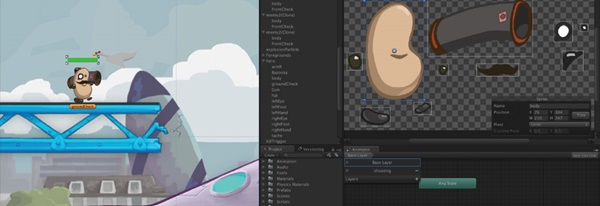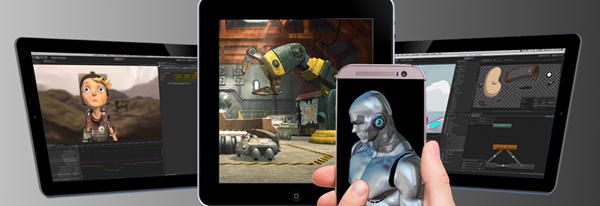How to Become a Video Game Designer
Your enthusiasm for gaming could be Step 1 toward a dream job as a video game designer. Take your passion, add some artistic, math or computer science skills, gain some solid experience, and suddenly you’re living the dream.
What’s It Like to Be a Video Game Designer?
Video game designers usually work on a team, pairing artistic vision with programming excellence. Team members, including specialists in animation, game operations, scripting language and mobile game design (IOS and Android), together create the key elements of a successful game – the concept, characters, setting, story and mechanics. Graphics, text, audio, 3D, game level design, user interface and device compatibility are all integral parts of the whole.

Before a video game design firm will approve funding for new game development, the design team will have to create a storyboard and pitch their game concept to the decision-makers – so hone your presentation skills! Project management skills are also required to put an efficient game design implementation plan in place, including product testing and distribution.
Salaries for Video Game Designers
Talented game developers can definitely earn a good living. The average annual salary for a Video Game Designer in the U.S. varies, depending on who you ask. Payscale.com said average pay is $58,253 per year, while the 2014 U.S. Bureau of Labor Statistics report showed $69,410 (including averages for multimedia graphic designers and animation specialists).
Sokanu.com was even more optimistic, quoting an average annual salary of $85,520, with potential up to almost $127,000.
Skills, schooling, experience and outside-the-box creativity are all factors in the kind of salary you can demand.
Key Skills for Video Game Designers
Being "into" video games is only part of the equation for becoming a game designer. To turn dreams and vision into reality, a prospective game designer needs training and skills.
- Let’s start with creativity – that’s a given.
- Good video game designers also know how to tell a story and work as part of a team.
- Obviously you’ll need computer skills, too: programming languages, software programs, 3D game design, modeling, etc.
- You must have a knack for video graphics as well as a grasp on hardware essentials.
- Expertise with applications like Adobe Photoshop will increase your pay grade.
- You’ll have to be comfortable sitting in front of a computer monitor for large chunks of the day (or night), and be able to work independently, with minimal supervision.

Schooling Required for Video Game Designers
Although a degree is not technically required to become a video game designer, many companies are specifically looking for candidates with a bachelor’s degree in game design, computer science or computer engineering.
The degree is especially important if you’re planning to work for a large game studio. Coursework for a game design program includes classes in 2D and 3D modeling, animation, level and interface design, storyboard rendering, drawing and scripting.
Top 10 Colleges for Game Design
The Princeton Review ranked the top 25 undergraduate and graduate programs offering game design classes.
We’ll list their top 10 here:
- University of Southern California, Los Angeles, CA
- University of Utah, Salt Lake City, UT
- DigiPen Institute of Technology, Redmond, WA
- Drexel University, Philadelphia, PA
- The Art Institute of Vancouver, Canada
- Rochester Institute of Technology, Rochester, NY
- Michigan State University, East Lansing, MI
- Shawnee State University, Portsmouth, OH
- Becker College, Worcester, MA
- Hampshire College, Amherst, MA
Your Next Step in Becoming a Video Game Designer
So, you’ve got the passion and inspiration – how do you make it happen?
- Your first assignment: Play games!
- Get familiar with the latest video game design trends and the advanced underlying technology.
- Look for ways to improve existing games, and jot down design concepts for your own game.
- Envision your plot, characters and action; then create a storyboard.
Of course, passion and basic game familiarity won’t guarantee you a good job. As you’ve probably heard more than once: it’s hard to get a job without experience. So start gaining that experience!
Sign up for video game design and programming classes or summer camps. We’ve got a good one for you: the Mason Game & Technology Academy (MGTA). This game design camp, held on the campus of George Mason University near Washington D.C., will:
- Teach you animation, video game graphics, IOS, Android and 3D game design
- Provide insight into entrepreneurship and the game design industry
You can attend for one week or multiple weeks, to get the level of design experience you want, in the gaming areas that are most interesting to you.
Other tips:
- Join a video game design club
- Get some free or inexpensive video game design software
- Enter video game design competitions
- Continue to increase your level of design sophistication; soon you’ll have a portfolio of design experience!
As you take these steps, you’ll develop a more concrete vision for a video game design career path and area of focus. Are you a game animation designer? A level designer? A graphics artist? Or a programmer? Talk to your school career counselor, who’ll help you put a step-by-step plan in place.
Other Resources for Video Game Design
Related Article: Learn Video Game Design!
background-image: a building with the American flag in front of it